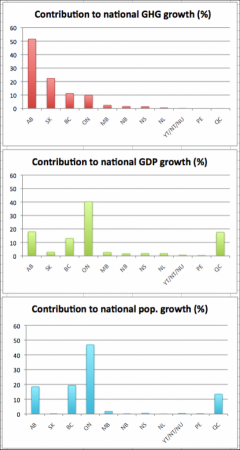High speed rail is often held up as a model transport option for a carbon constrained world. By offering speed and convenience, the idea is that such trains will displace flights and thus lead to lower emissions. Of course, running a train at high speed requires using more energy to get up to speed and to combat air resistance. In a recent column, George Monbiot points out this and other issues with high speed trains as a cimate change solution:
Throughout the recent government documents there’s an assumption that the new railway will be sustainable because it will draw people out of planes. But buried on page 162 of the report on which the department has based its case, published in March 2010, are the figures which derail this assumption. Of the passengers expected to use the new railway, 57% would otherwise have travelled by conventional train, 27% wouldn’t have travelled at all, 8% would have gone by car and 8% by air. In other words, 92% of its customers are expected to switch to high speed rail from less polluting alternatives. Yet the same report contains a table (page 179) suggesting that the savings from flights not taken outweigh the entire carbon costs of the railway. It provides neither source nor justification.
The 2007 report shows that even if everyone flying between London and Manchester switched to the train, the savings wouldn’t compensate for the extra emissions a new line would cause. “There is no potential carbon benefit in building a new line on the London to Manchester route over the 60 year appraisal period.” A switch from plane to train could even increase emissions. Unless the landing slots currently used by domestic flights are withdrawn by the government, they are likely to be used instead for international flights. The government has no plan for reducing total airport space.
I do think there are situations where high speed rail could provide environmental benefits. In particular, it could be good to connecting major urban centres that are not too far apart, and where zero carbon forms of electricity are available. Many such connections could be made between cities on the east and west coasts of North America.




